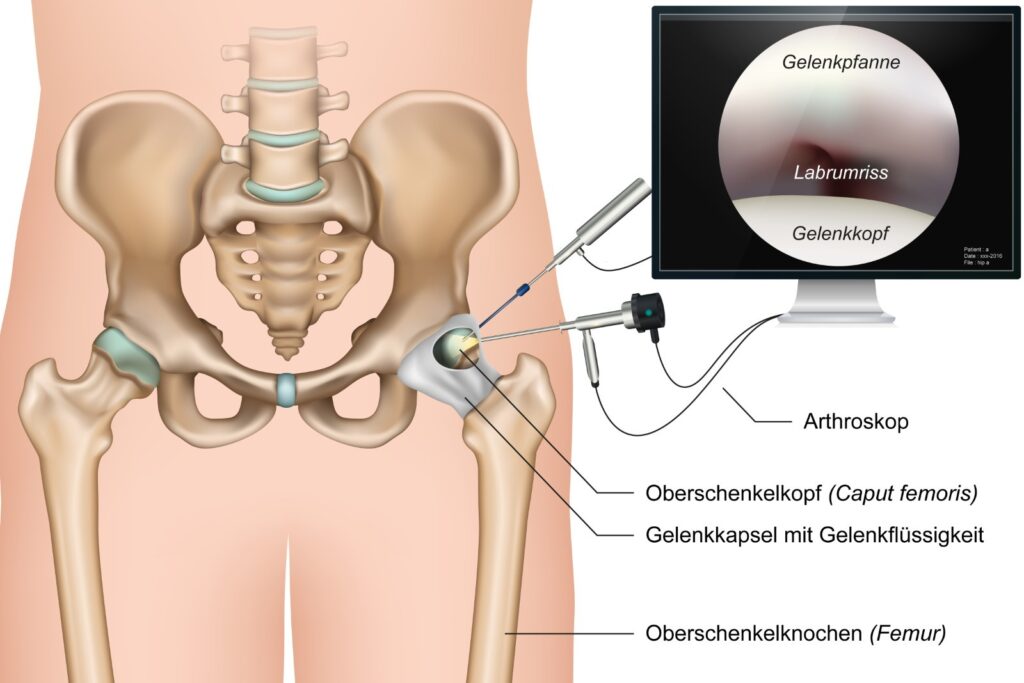The hip joint is a very vital part of our body, and it plays a massive role in helping us move around. It acts like a ball-and-socket system, which gives it a great range of motion. But because of all the stress it endures every day, it’s very vulnerable to wear and tear and injuries. That’s where learning about hip arthroscopy benefits becomes useful.
Some of the most frequent reasons that cause pain here include labral tears, cartilage injuries, and arthritis. These issues can be very painful and limit how much you can move. Labral tears happen when the soft tissue in the hip socket tears. Cartilage injuries can be a result of constant stress or sudden trauma to the joint, both of which are treatable through hip arthroscopy surgery.
Lifestyle factors, like a lack of exercise or obesity, can put extra pressure on the hip joint, speeding up its wear. As people get older, the natural aging process can also make the hip joint weaker and more prone to problems. This is why many turn to procedures like hip arthroscopy to tackle these issues.
The trick to keeping your hips in tip-top shape is to catch problems early. Early detection can mean the difference between an easy fix and a major problem. This is why going for regular check-ups is important. By understanding your hip health better, you can make better decisions about your joint health. And one of these solutions could very well be hip arthroscopy, especially when considering its role in fixing joint problems.
Debunking Myths and Misconceptions About Hip Arthroscopy
When talking about hip arthroscopy pros and cons, some myths often come up. Some folks think hip arthroscopy isn’t very effective. But in reality, it’s a proven method to address joint issues, with many experiencing significant relief and improved mobility.
Another common myth is that the hip arthroscopy recovery time is long and painful. But in most situations, patients are actually able to return to their regular activities sooner than expected. Of course, every case is different, so it’s always best to speak to your doctor about what you should expect post-surgery.
Sometimes people debate if it’s better than other treatments like medication and physical therapy. What they need to know is that while medicine can help with pain and swelling, and physical therapy can improve movement, neither of these addresses the root problem. Hip arthroscopy can dive right in and tackle the issue from the inside. Plus, advancements in technology have made procedures quicker and more precise.
Experts, including top orthopedic specialists, often recommend hip arthroscopy as a preferred method for certain hip conditions. They typically look at factors such as the type and extent of the injury and the patient’s lifestyle. This ensures the chosen approach will provide the best outcome.
Preventative Care and Technological Advancements in Hip Arthroscopy
Hip arthroscopy isn’t just a fix; it’s also a tool for preventing further problems. By addressing issues early on, patients can maintain better joint health in the long run. This means fewer problems as they age.
Technology has greatly transformed how hip arthroscopy works. New advancements make the procedure even safer and more efficient than before. For instance, there’s improved camera technology that gives doctors better views of the joint’s inside, allowing more precise actions to be taken.
Due to these advancements, the risk of complications has decreased, and patient results have improved a lot. For example, medical tools are now more precise, which reduces the risk of harming the surrounding tissues during surgery.
Case studies highlight these benefits. One case showed a young athlete who faced possible career-ending hip pain. After undergoing hip arthroscopy surgery, they not only returned to their sport but excelled. These real-life stories emphasize the progress in this field and its significance for individuals seeking longevity in joint health.
Recovery and Exercises After Hip Arthroscopy
Post-surgery is a critical time. Typically, the hip arthroscopy recovery time is a few weeks to months, depending on the patient. Most patients get back to their usual activities after getting the go-ahead from their doctor.
Rehabilitation is crucial. Exercises recommended by your doctor help regain full movement and keep joints flexible. Emphasizing rehab exercises is important because they help prevent further injury.
To boost recovery, consider some lifestyle changes. Eating a balanced diet, staying hydrated, and avoiding activities that put strain on your hips can be beneficial. Proper nutrition supports the body in healing, while mindful movement avoids setbacks.
Here are some suggested exercises post-surgery:
- Gentle stretching: Helps improve flexibility and range of motion.
- Walking: A simple way to gradually increase strength and endurance.
- Leg raises: Enhances muscle tone without putting undue pressure on the joint.
Listening to your body and following your doctor’s advice will guide you best. Patience and persistence with these exercises after hip arthroscopy can lead to a successful recovery. As you heal, you’ll realize more of the hip arthroscopy benefits, making it a sound decision for joint health.


